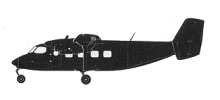Incident Overview

Description
An Airbus A330-223F cargo plane sustained damage to the wing after colliding with a light pole at Astana International Airport in Kazakhstan. The aircraft was operated by Malaysia Airlines on behalf of Turkish Airlines. The first officer was pilot flying. The crew expected a landing on runway 04 and briefed the expected taxi routing after landing. The runway would be vacated either using Taxiway C, B or even A, taxi along the parallel Taxiway P, making a right turn to Taxiway H and then proceed to the parking bay. However, upon landing on runway 04, Astana ATC cleared the crew to vacate the runway via taxiway C, then taxi on the apron to Gate 2. Upon entering the apron area, the crew observed that there were two separate taxi lanes adjoining Taxiway C; one leading towards the main terminal and the other towards the open bays across the terminal. These taxi lanes were not given any specific designation, either on the ground or on the airport charts that were provided. As the crew were approaching the intersection between Taxiway C and the two unnamed taxiways, they had noticed a wide bodied aircraft located at around Gate 10 being pushed back. This appeared to pose as a potential obstruction should the crew proceed to taxi along the inner taxi lane. Incidentally, there were no aircraft parked in any of the bays between 15 and 21, thus giving the crew a perception of clear taxi path along the outer taxi lane. The crew had not attempted to clarify with ATC Ground Controller on which taxi lane to use. Since there was no specific instruction from ATC on which taxi lane to use, and considering that there is no restrictions listed on the Airport Operational Information (AOI) with regards to ground movement of A330 aircraft on the apron taxi lanes, the crew decided to follow the outer taxi lane in order to keep clear of the aircraft at Gate 10. As they were turning into the outer lane, they saw the light pole on the left hand side of aircraft but were sure that there was sufficient clearance to clear the pole. As the aircraft was taxiing on the centre line of the outer taxi lane, they felt a jolt and immediately stopped the aircraft. The left wing of the aircraft had hit a lamp-post and caused it to topple. Apart from the light pole, the aircraft wing also came into contact with another smaller pole with a CCTV mounted. The CCTV was knocked off and the pole scratched the underside of the wing. The impact resulted in the number 6 slat leading edge being damaged. At this point, the crew were told by the Astana Ground Control to hold position and wait for a ‘Follow-me’ car to assist in the taxi. Probable Cause 1. There was no taxiway restriction prescribed on either the Astana AIP or the Aerodrome charts. Maximum wingspan limitation was stated only for the remote parking bay. 2. There was a lack of information on LIDO AGC which resulted in ambiguity. 3. There are numerous unnamed taxiways at Astana International Airport. 4. There was a mistaken belief by the flight crew that the aircraft will have enough separation from stationary object as long as they are on the taxiway centerline. 5. The flight crew was not fully aware of the proper obstacle clearance estimation during taxi. 6. The non-specific ATC instruction and lack of monitoring promotes the potential for error by flight crew.
Primary Cause
Lack of clear ATC instructions and ambiguous airport operational information, leading to a misinterpretation of taxi lane restrictions and a lack of obstacle clearance estimation.Lack of clear ATC instructions and ambiguous airport operational information, leading to a misinterpretation of taxi lane restrictions and a lack of obstacle clearance estimation.Share on:





